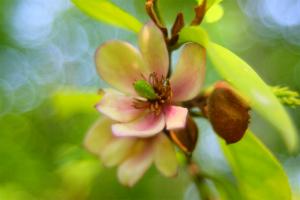Introduction: What is Fertilization?
Fertilization is the process of providing essential nutrients to a plant to promote its growth and development. This is especially important for potted plants, as they are confined to a limited amount of soil and depend solely on the nutrients provided to them.
Identifying the Nutrient Needs of Your Potted Plant
The first step in fertilizing a potted plant is to identify its specific nutrient needs. Different plants require different nutrients based on their species, size, age, and growth stage. In general, plants need nitrogen, phosphorus, and potassium, as well as trace minerals like magnesium, calcium, and iron.
Choosing the Right Fertilizer
Once you have identified your plant's nutrient needs, the next step is to choose the right fertilizer. There are many different types of fertilizers available, including granular, liquid, and organic. Granular fertilizers are slow-release and provide nutrients to plants over a longer period of time. Liquid fertilizers are fast-acting and provide nutrients quickly. Organic fertilizers are made from natural materials and are a more environmentally friendly option.
When to Fertilize Your Potted Plant
The timing of fertilization is also important. In general, plants should be fertilized during their growing season, which is typically from spring to fall. Fertilizing during the winter months can lead to over-fertilization and damage to the plant. Additionally, it is important to follow the fertilizer's instructions on how often to apply the product.
How to Apply Fertilizer to Your Potted Plant
When applying fertilizer to a potted plant, it is important to follow the instructions on the label carefully. Over-fertilization can damage the plant and even kill it. For granular fertilizers, spread the pellets evenly on top of the soil and water well. For liquid fertilizers, dilute the product according to the instructions and apply to the soil around the base of the plant.
The Importance of Proper Watering
In addition to fertilization, proper watering is crucial for the health of a potted plant. Overwatering can lead to root rot, while underwatering can cause the plant to wilt and die. It is important to water the plant only when the soil is dry to the touch and to ensure that the water drains out of the bottom of the pot.
Conclusion: Fertilizing Your Potted Plant
Fertilizing a potted plant can be a simple process, as long as you follow the steps outlined in this guide. By identifying your plant's nutrient needs, choosing the right fertilizer, fertilizing at the right time, and watering properly, you can provide your plants with the essential nutrients they need to thrive and grow.

 how many times do yo...
how many times do yo... how many planted tre...
how many planted tre... how many pine trees ...
how many pine trees ... how many pecan trees...
how many pecan trees... how many plants comp...
how many plants comp... how many plants can ...
how many plants can ... how many plants and ...
how many plants and ... how many pepper plan...
how many pepper plan...




























